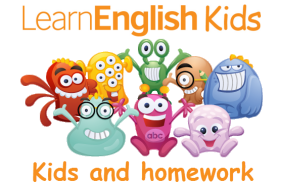(Hago esta publicación en castellano para que lo entendáis todos los alumnos y padres/madres)
Si os paráis unos minutos a "indagar" en el blog, veréis que tengo varias publicaciones sobre los exámenes de Cambridge, tan solicitados en la actualidad. En ellas os proporciono infinidad de recursos para prepararos estos exámenes, al igual que información detallada de en qué consisten y sus últimas actualizaciones. Aunque son muy conocidos en el ámbito educativo, aún hay gente que no sabe muy bien qué son y desconocen sus principales características y validez. Os lo explico brevemente aquí:
En la parte izquierda están los niveles de idioma en base al Marco Común Europeo de Referencia para las Lenguas, siendo el nivel más bajo el A1 y el más alto el C2.
Los exámenes de inglés general de Cambridge comienzan con un nivel por debajo del A1 (Nivel Beginner) porque se trata de pruebas dirigidas a alumnos que comienzan con el idioma (lo más común es que sean alumnos de 6 años, aunque pueden ser algo menores o mayores, dependiendo de su nivel). Estas pruebas dirigidas a alumnos de educación primaria (lo que en inglés conocemos como Young Learners) comienzan con el exámen STARTERS, después sería el MOVERS y por último el FLYERS. Son pruebas muy divertidas y motivadoras con mucho colorido, y el alumno disfruta mucho haciéndolas. Una vez se corrige el examen, el alumno recibe un certificado de la Universidad de Cambridge con la valoración de su "saber hacer".
http://www.cambridgeenglish.org/es/exams/young-learners-english/
Coincidiendo con el mismo nivel que FLYERS (A2) se encuentra el examen KET (Key English Test), diseñado para alumnos que sepan usar el inglés para comunicarse en situaciones sencillas.
http://www.cambridgeenglish.org/es/exams/key/
Entrando ya en un nivel intermedio (B1) se encuentra el PET (Preliminary English Test), con el que el alumno demostraría saber usar sus destrezas del idioma para comunicarse en diversas situaciones cotidianas.
http://www.cambridgeenglish.org/es/exams/preliminary/
En el nivel intermedio-avanzado (B2) está el famosísimo examen First (FCE). Es el nivel mínimo que exigen en muchos ámbitos tanto educativos como profesionales (acceder a becas de estudio, conseguir un empleo, etc.).
http://www.cambridgeenglish.org/es/exams/first/
Sobre esta prueba en particular, tengo varias publicaciones en el blog, muy útiles si estás pensando en preparártelo ;)
Ya en un nivel avanzado están el CAE (Certificate in Advanced English - C1) y el CPE (Certificate of Proficiency in English - C2)
http://www.cambridgeenglish.org/es/exams/advanced/
http://www.cambridgeenglish.org/es/exams/proficiency/
Hay centros escolares que son centros examinadores oficiales de Cambridge donde sus alumnos se pueden presentar a estas pruebas con total comodidad. Para aquellos que no tienen esta oportunidad, os podéis matricular del examen y presentar a la prueba en cualquier otro centro oficial examinador que haya en vuestra ciudad. Podéis encontrar esa información aquí (seleccionando vuestro país y la modalidad de examen):
http://www.cambridgeenglish.org/es/find-a-centre/
Todas estas pruebas de las que os he hablado son de inglés general, y se pueden realizar en formato papel y también de modo online, pero siempre desde un centro examinador oficial.
El resto de exámenes que aparecen en la imagen superior son pruebas de inglés académico y profesional, de los que también soy Examinadora.
Podéis encontrar ejemplos de pruebas aquí:
http://noticiascambridgeenglish.org/muestrasexamenescambridgeenglish/
Si necesitáis más información al respecto, no dudéis en preguntarme.
Un cordial saludo ;)


































